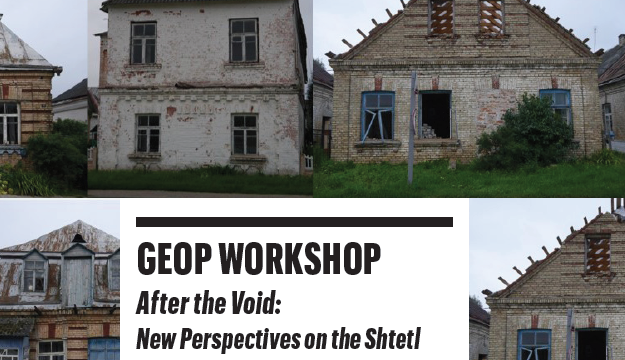The Second World War, the Holocaust, and the mass (forced) migrations triggered by the post-war power shifts have not only caused a gigantic death toll and material damage in East-Central Europe, but transformed the patterns of urban life in the entire region. While cities like Vilnius or Pinsk suffered a nearly complete loss of their pre-war population, others, like Minsk or Warsaw, got almost completely wiped out in their material substance (Ciborowski 1969, Vale and Campanella 2005, Bohn 2008, Bartetzky and Benthin 2017). Erasing entire cities off the map was not only a contingency of military activities, but also a conscious strategy of the German armed forces to wreak psychological terror and demoralize the enemy. For example, Himmler’s plan to level Warsaw with the ground after the uprising of 1944 was meant to “decapitate” Poland as a nation, and carry long-time geo-political consequences for the entire region (Borodziej 2010: 251).
While the physical destruction of the urban built environment during the Second World War turned out to be a reversible phenomenon, and all major urban centers of East-Central Europe were painstakingly rebuilt or even partly reconstructed (like Warsaw), the loss of the original ethnic structure, social networks, cultural heritage and even memory of their past, has been permanent and left a lasting, traumatic and culturally devastating influence on this part of Europe to this day (Snyder 2010, Meng 2011, Janicka 2011, Napiórkowski 2016). The greatest loss concerned the shtetls: small to mid-size towns with considerable Jewish population (often a majority) which constituted the key emanation of Jewish urban life and formed a unique socio-cultural communal pattern on a vast territory of the former Polish-Lithuanian Commonwealth. These urban pockets were, in the mid-eighteen century, the home of over a third of world Jewry, which made the largest Jewish community in the world. Three quarters of these East European Jews inhabited small to mid-size towns (Polonsky 2004: 14). Although they were all repopulated in the aftermath of the Holocaust, they underwent processes of abandonment, loss of heritage and social amnesia.
It is the lost Jewish town—as a built environment, a social geography, a “paradigmatic locus of communality,” and a metonym of traditional values—that constitutes the greatest lacuna in the East-Central European urban landscape (Shandler 2014: 44). Its central importance to Jewish life and traditions makes it also a key Jewish archetype and the source of “a transcendent Jewish cultural essence” (ibid.: 90). It is no wonder then that the lost Jewish towns have received a large amount of attention in the post-1945 scholarship: as a figure of nostalgia (Abramovitsh 1947, Zborowski and Herzog 1952), a concept or literary trope (Dawidowicz 1967, Roskies and Roskies 1975, Wisse 1986, Dymshits, Lvov and Sokolova 2008, Shandler 2014), or an actual space of Jewish life and death (Hundert 1992, Gross 2000, Hoffman 2009, Kobrin 2010, Tryczyk 2015, Engelking et al. 2018, Bartov 2018). At the same time, while individual shtetls and their pre-WWII history have been intensively examined, studies that concentrate on what became of the lost towns after 1945 (Polec 2006, Dymshits, Lvov and Sokolova 2008) and comparative studies (Bauer 2009) are less numerous. A systematic and transnational examination of how these urban centers were appropriated, repopulated and filled with new meanings still needs to be written.
The present workshop addresses this gap in the research, bringing together two international teams of scholars currently embarked on comparative projects exploring the post-1945 history of the shtetls in the Polish-Belarusian-Ukrainian borderlands. Bringing together some of the most renowned experts on Jewish history and memory in the region and young scholars in the field, the workshop has the goal of presenting the first, preliminary results of the new cutting-edge research in this area, as well as addressing some overarching methodological questions about the challenges of investigating the Jewish absence (and presence) in the post-Holocaust and post-Soviet rural setting.
